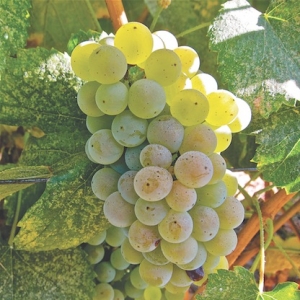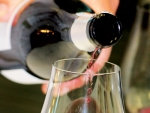Over the past few issues Peter Saunders has looked at the history of the New Zealand wine industry, decade by decade. This month, he takes a closer look at where we currently sit and what the future holds.
Five years of good fortune, built up by five decades of enthusiasm, consolidation and experimentation make a happy chapter in New Zealand’s wine story.
It’s true that not every winemaker is making a fortune or even selling profitably every litre they make, but as a country, New Zealand’s wine industry is doing better than most. As the Delegat Group and Villa Maria plan new wineries in Hawkes Bay, there are riots over issues in Champagne. Bordeaux struggles to survive at the prestigious level it once enjoyed. Australia leaves vines unpicked because in several areas, they won’t make wine cheaply enough.
Yet statistically, little New Zealand continues to enjoy great bounty, tough though it is to massage markets when the dollar makes prices so difficult. Still an increase of 30 per cent in export volume tells its own story about the past five years. And it has not stopped.
Mother Nature has been kind of course. When once it was hard to convince a wine maker that Siebel 5455 should be replaced by Merlot with a fifth of the yield, Pinot Noir now shines brightly at five tonnes per hectare. The wine market likes quality and in New Zealand volumes, is happy to pay for it.
I recall addressing a winemakers’ meeting in Nelson a decade ago and being extensively questioned as to what variety should we be planting now for the next boom, the next fashion. After all, we had done Chardonnay well and truly, Pinot Gris had been successful to the point of declining Chardonnay sales, so what was next?
What John Hancock proved with Syrah in Hawkes Bay is that with care and management we can grow almost anything in New Zealand. Yes, Syrah yields are lower to get them ripe but for a variety written off as being too ‘hot climate’ for New Zealand’s conditions, there proved to be a highly successful variety waiting for the brave.
Gruner Veltliner, Viognier, Verdelho started to give us fine alternatives. Albarino was discovered as a success story, Sauvignon Gris, Tempranillo. The list seems endless and some will of course work better than others. Meanwhile, Sauvignon Blanc drives the engine, the Hawke’s Bay red blends show finesse to reward those who give them tender loving care and we become a multi-varietal country where there are few failures.
Even Muller Thurgau could come back into sights if we accept a sensible yield to allow its flavours to come out rather than equal the volume per hectare of Baco 22a in the 1960s.
Despite all the opportunities, these have been five tough years for New Zealand wineries and marketing people. Global financial difficulties and increased competition have not daunted the New Zealand ability to produce and sell good clean and expressive wine. But it has been hard work.
For some of us, it does not seem far back when one winemaker took court action against another for saying ‘he makes wine taste like Coca Cola’. Perhaps Cold Duck did in the 1970s, but look where we have come since then. Even our tastes have changed as wine drinkers. Expressive, freshly clean, aromatic whites with some class have been joined by complex, rich reds from an expanding range of varieties and blends.
Both genders of winemakers bring expression from all over the world, including New Zealand universities and polytechnics. Few winemakers employed in New Zealand today have not done vintages in Europe or America, probably both. It’s a giant step in 50 years when dad started each day by firing up the ‘still’.
Investment also has come from around the world. Who would have thought a Portuguese company would buy a New Zealand winery? Californians, Germans, British, Australians have all provided capital and distribution. Many have brought their families to live here. Others commute to New Zealand while maintaining other businesses elsewhere.
Bulk wine and buyers-own-brands have come under fire since 2010. Perhaps they needed scrutiny, perhaps in some cases they were a last-resort for some growers and wineries struggling to make ends meet. My own experience with such wines is that they are not all ‘fails’. Indeed, many provide excellent drinking at a very good price, whether bought through the supermarkets or through an on-line outlet. A lot are also exported.
It is the small minority which take over-yielded fruit and sell a thin wine which risk harming the good built up by others and the local terroir. ‘These guys stop the rest of us making a buck’ one winemaker quietly said to me, and he wasn’t talking about holidays in the Bahamas, but a good living for his family and staff.
What has been an interesting development in the last five years has been the sale of brands, without necessarily the vineyards which established the quality which made the brand saleable. We watched first as several brands were sold in Australia, spirit brands in Europe. Now the brand is a commodity in itself, with a value of course, but also saleable.
Pernod Ricard sold off a bunch of brands and latterly Morton Estate (now trading as The Wine Portfolio Ltd) has sold its signature brand to be replaced by new brands from mostly the same vineyards.
So when we look at the wine in New Zealand 2015, we see a vibrantly active industry, expanding, drawing both investors, wine graduates and consumers, the latter group expanding as discoveries are made of clean varietal statements.
We cannot overlook the people who have put this industry in a positive and growth track. Too many to mention – perhaps.
Think of the vision and contribution of Mate Selak, Mate Brajkovich, Alex Corban, Terry Dunleavy, Larry McKenna, John Buck – the list is endless. They all deserve to be appreciated and celebrated.
Did they sense Albarino and exports of $1.3 billion in 2014? Unlikely, and the beauty of their contribution is that the Albarino chapter is not the last by any means.












